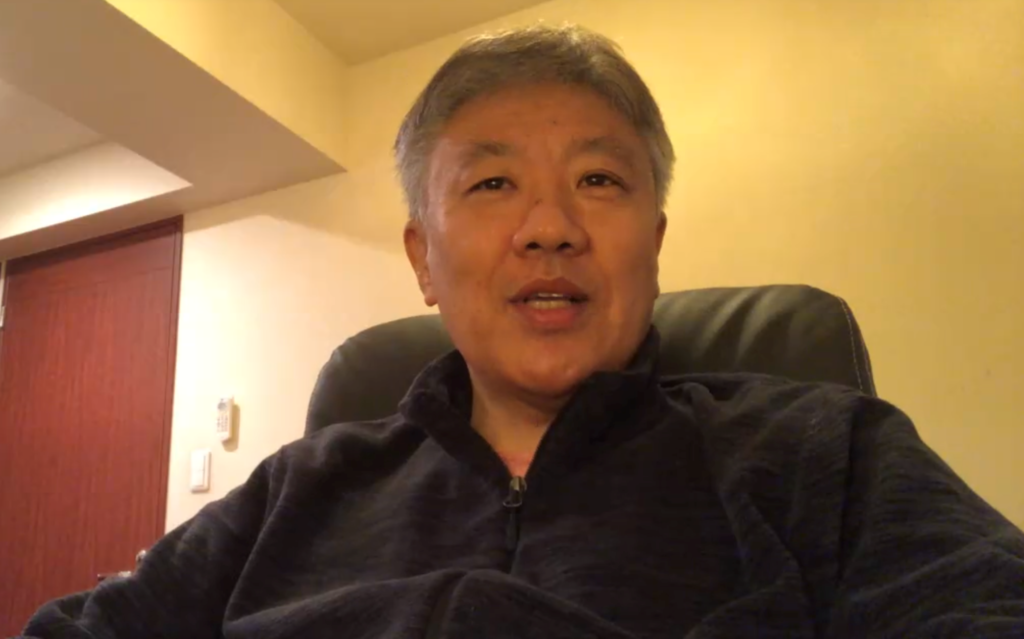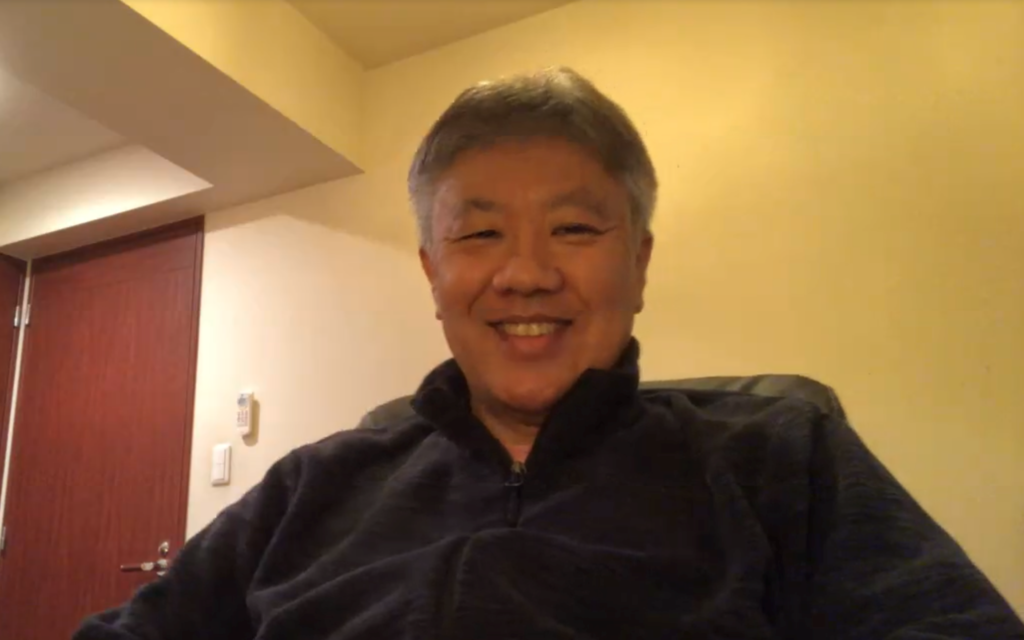The PReP model contributed to a JPY 500 million order for Hitachi’s smart factory solution, H-SPEED
| Issues before the PReP model’s introduction | – Clients’ business reforms tended to be sub-optimized – Difficulties faced in communication with clients |
| Results after the PReP model’s introduction | – Steady progress in the client’s business reform – Demonstrated synergistic effects in combination with other methods – Contributed to a JPY 500 million deal |

Mr. Hidenobu Yoshida, Hitachi, Ltd.
Hitachi provides the smart factory solution, H-SPEED, to support organizational reforms in the manufacturing industry. Based on the Hitachi Group’s extensive experience and knowledge in operational improvement at factories, H-SPEED was commercialized in 2017 and offers business improvement consulting, IT systems, and the Internet of Things (IoT) to clients in the processing and assembly manufacturing industries. Since 2017, H-SPEED consulting services have been delivered to many clients with significant results. The PReP model is one of the methods employed by H-SPEED.
Mr. Hidenobu Yoshida of the Social Innovation Business Division at Hitachi is in charge of promoting H-SPEED. He spoke to us about how the PReP model has enabled H-SPEED’s success story.
The PReP model is indispensable for operational reforms aimed at smart factories
Please tell us about the scope of the PReP model in H-SPEED.
Mr. Yoshida: Supporting clients’ operational reforms means not only drawing up the goal image but also accompanying them to the point where this goal is achieved without fail. My team provides consulting services for operational reforms and system requirements definition, and by collaborating with our system department, we provide clients with IT systems that can execute the ideal operations. We use the PReP model to identify the root causes of current issues, design the ideal process, and define the system requirements.
More specifically, how do you use the PReP model?
Mr. Yoshida: First, we determine the scope of the reform, and then we draw the current operational process using the PReP model by interviewing the person in charge of each operation. Next, we identify the root cause of the problem by considering the issues each operation is experiencing, including the structural ones. After identifying the root cause, we design the ideal process. We collaborate closely with the client to create the goal image by referring to Hitachi’s knowledge of business reform and models. It is important to think together with the client. After the direction of the goal image is determined, we simulate the operation using the PReP model to verify its feasibility.
Then, we work on the systemization. IT/IoT technology is essential for a smart factory, so the system requirements are output from the goal image created by the PReP model and are incorporated into the system requirements definition. After the system requirements are defined, our system engineers take over.
In this way, I feel that the PReP model plays the most important part in H-SPEED’s activities.
Since we can identify the root cause, we can promote reforms faster and more steadily than if we address each issue one by one
I understand that your clients have many issues. How do you handle them?
Mr. Yoshida: In many cases, the client’s entire factory is the scope of business reform if they are aiming for a smart factory. As a result, various problems, such as “too much work-in-process inventory” or “not being able to meet delivery dates,” come up from each department or position. In general, it is common practice to compile a list of many problems that have been identified and to suggest solutions to each of them. If you do this on a one-to-one basis, it will not be effective unless you address all of them. However, the client has a limited budget in many cases, so we cannot do everything on the list. In that case, we have to calculate the cost-effectiveness and prioritize. But if we implement only the selected items, the results will be limited. In addition, if we were to only respond to one problem at a time, any IT company could play our part. Our first priority is to produce significant results with little effort (cost and time) by extracting the underlying issues. In many cases, clients do not know all the issues they face. However, it is not easy for them to have a bird’s eye view of how their own operation is functioning in the entire operational process. Therefore, as a third party, we take a bird’s eye view of the entire operation and identify the root cause.
How do you identify the root cause of an operational issue?
Mr. Yoshida: We clarify the goal that we want to achieve, and then we ask the client to list the problems in achieving the goal. At first glance, the problems may seem to exist separately, but they are actually related to each other. We structure the problem in a causal relationship and promote reforms by focusing on the underlying problem. This is done by describing the current picture using the PReP model and then conducting a structural analysis by pasting underlying problems onto the corresponding tasks in the PReP model. When described in the PReP model, we can see at a glance which operations are high risk. Structural analysis is a strength of the PReP model. We can identify the root cause of the problem based on the client’s problems and the structural analysis using the PReP model.

Conversations based on the PReP model can lead to significant insights
Why is it easier to reform operations using the PReP model?
Mr. Yoshida: In general, when describing business operations, we often use a task-oriented notation that describes tasks such as “registering orders” or “checking inventory.” In the PReP model, we only describe the products that are created as a result of registering orders—for instance, “order registration sheets”—not the tasks. To streamline the operation, it may be necessary to abolish the task that is currently being performed. If you review the business process described from the task perspective to discuss what needs to be changed, and if each task is associated with a person in charge in the frontline, it would be difficult to proceed with the discussion because reducing the number of tasks means removing the person performing the task. So, it would be difficult to implement a goal image created by an external consultant because of strong opposition from the frontline workers. On the other hand, if we discuss the business process from the product-based perspective, we can think, “The means are not important as long as we can produce the products.” This way of thinking allows us to have constructive discussions on how we can change the operation to produce the products.
In this way, we believe that it will be easier for our clients to proceed with their business reforms.
Please tell us the duration of the PReP model workshop and the number of participants from clients.
Mr. Yoshida: It depends on the characters needed to draw the business process: Production control, procurement, design, manufacturing, quality assurance, and, in some cases, logistics are also included. Each department will be represented by a coordinator who understands the operation’s purpose. The number of participants in one workshop is usually about 10–15 people (2–3 people per department x 3–5 departments), since all departments related to the business process to be described are required to participate. Although the number of interviewees is usually 10–15, there are times when young people and people from other departments are also asked to participate to understand the relevant operation, in which case about 20 people may gather in one room. It takes about six months to define the system requirements. About twice a month, we hold a workshop with the client to build up the PReP model.
Are there any advantages to having multiple departments come together?
Mr. Yoshida: Yes. Each operation cannot stand alone. By learning about processes that are outside of your area of responsibility, you can gain insights into your own operational processes, such as how your product is used and why some data tend to be delayed. We can gain important insights for the project, because everyone involved can focus on what is essential in the process by emphasizing the product. If you just want to draw an operational flow, I think any method will do, but the PReP model is the easiest way to achieve the final business reform.
Is there anything you keep in mind when using the PReP model?
Mr. Yoshida: The client’s project manager should motivate the business reform project’s participating members. The people assigned to the project need to be in a position to discuss and make decisions about the new operations of the organization. Of course, these people are very busy. In order for them to take time out of their busy schedules to participate, we need leadership from the top management. We try to make sure that the client’s project manager understands this before the project starts. It is also important to set goals for the project at the beginning. Participants need to understand why they are called for the project. For example, if you set “100% on-time delivery” as a goal, participants should understand that one department alone cannot solve the issue to achieve the goal and be convinced why they have been called in. If clients themselves do not have the attitude to solve their problems and regard problems as somebody else’s, it will not lead to business reform.
Synergistic effects by combining with other methods where appropriate
In addition to the PReP model, what other methods are used in H-SPEED?
Mr. Yoshida: We use the Theory of Constraints (TOC) thinking process to structure the client’s problems. The PReP model is used after the goal is set. First, using the TOC, we dig deep into the problems that the client expresses and extract the true problems. Then, we organize and structure the cause-and-effect relationships of the true problems to find the root cause. In this way, we can identify which problem needs to be solved to make everyone happy and set the goal for the reform to everyone’s satisfaction.
In addition, we use the TOC method to examine the direction of the ideal process, and we use the simulator to calculate the effects of implementing the new process, such as the on-time delivery rate, the work-in-process volume, and the production lead time.
To sum up, please tell us the advantages of using the PReP model.
Mr. Yoshida: Of course, there are advantages in the product-based method, but I think another benefit is that procedures can be standardized. Although we have only a few people on the team, we can work on 4–5 projects per month in parallel. In addition, the PReP model does not describe the means, so it is easy to incorporate other methods, such as TOC. Systemization is essential for business reforms toward smart factories, but the cost of system development is very large compared to the consulting fee. Therefore, it is important to estimate the effect of business reform. In one of our projects, we were able to estimate that the lead time could be reduced by 20%, and the client was satisfied with the results.
In addition, H-SPEED has contributed to the winning of system orders worth about JPY 500 million, which would not have been possible without the use of the PReP model.

Mr. Yoshida has reformed the operations of many manufacturing companies. We look forward to supporting the further development of H-SPEED!


